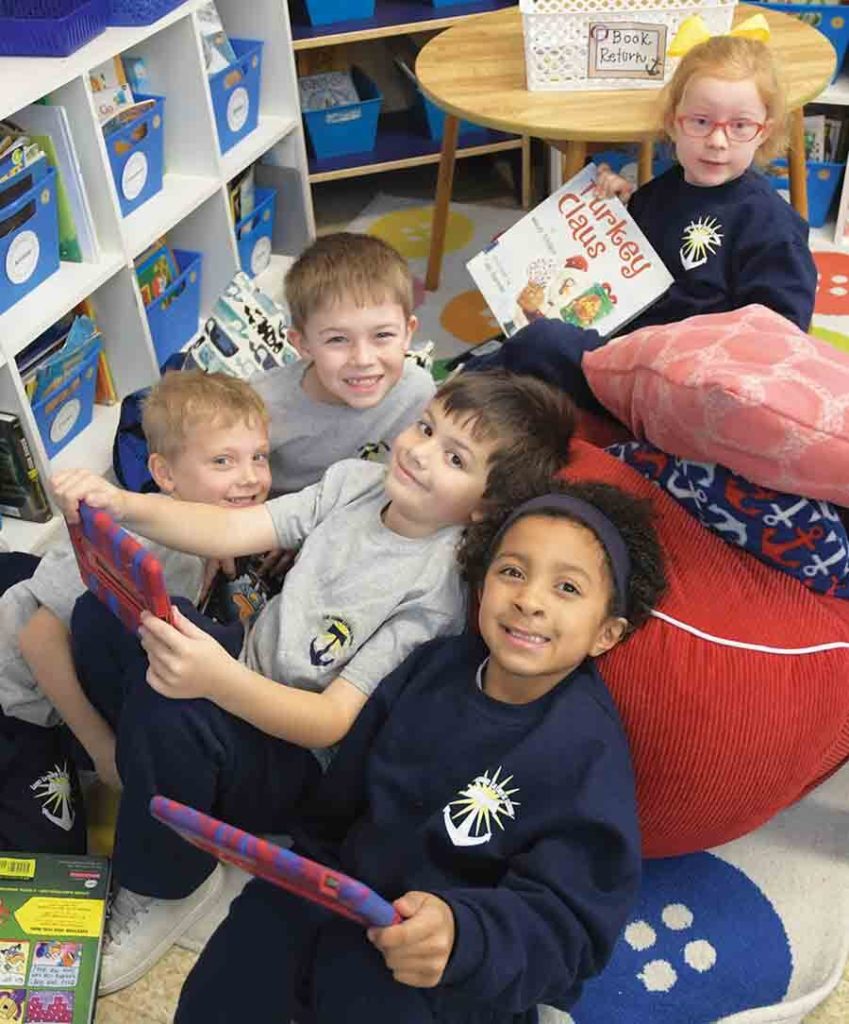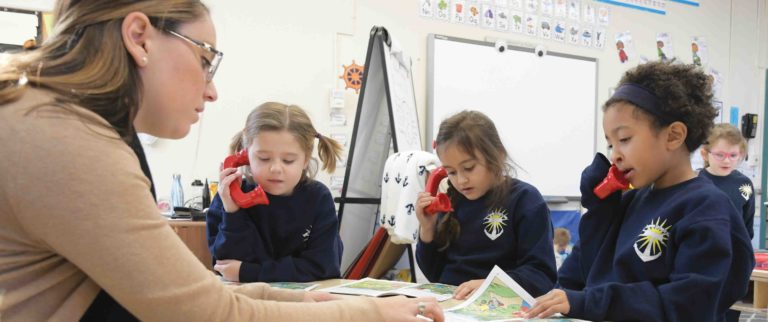Yoga balls, crates, wobbling stools and standing desks give the first-grade classroom at St. Casimir Catholic School in Canton an untraditional look.
Flexible seating “very much promotes the independence that first-graders are developing,” said Kara Stephen, who is in her third year teaching first grade at St. Casimir.
At the start of each day, her students use a magnetic board to select their seats. If a student then wants to change his or her seat, a discussion with the teacher is required, which helps the students, and Stephen, become aware of their learning preferences.
The seating arrangements are described as “fun,” but the 18 students in Stephen’s class are focused and attentive.

Students “developed the concept of awareness of their learning environment,” said Stephen, who noted that she sees fewer classroom disruptions, which are often caused by pent-up energy.
Her students, she said, are “developing their bodies in addition to their learning skills.”
Stephen introduced flexible seating, which is used in nearly half of the elementary and middle schools in the Archdiocese of Baltimore, last fall.
A New York native and graduate of The Catholic University of America in Washington, D.C., Stephen came to St. Casimir in 2015 through Notre Dame of Maryland University’s Operation Teach program.
As she completed her master of arts in leadership in teaching: reading specialist, Stephen was assigned a research project: design her ideal classroom. She learned of flexible seating, but before implementing it, observed kindergarteners in 2016-17 who would be in her class this school year. She said that they were a good fit, as many were active learners.
“They adapted so well to this change in their learning,” she said.
Stephen’s classroom, where she teaches all subjects, is arranged into centers for learning. The most manipulative station is the word work center, where students learn and write sight words (common terms found in texts) using magnet letters, bags filled with paint and a sandbox.
Stephen is not the only one noticing the difference – some of the students’ parents have asked where they can buy seats for their children to use in their homes.
“My parents have been on board since day one,” said Stephen, who sent them a brochure detailing her plan and made it a focus of back-to-school night.
Noreen Heffner, principal of St. Casimir for seven years, said that as other teachers see flexible seating working well, the idea is spreading.
“All new ideas are good,” said Heffner, who did her own research before approving Stephen’s plans. “We’re very lucky (Stephen) has been able to do this for the kids.”
Whether or not the students will continue in a flexible seating classroom in second grade depends on the teacher. Stephen and Heffner said that classroom design is very personal, for both teachers and their students.
As for Stephen, she will continue to adapt her classroom to her students’ needs, saying that she would not change much about her current classroom, but simply improve it.
“Teaching,” Stephen said, “is a profession that is always changing.”


